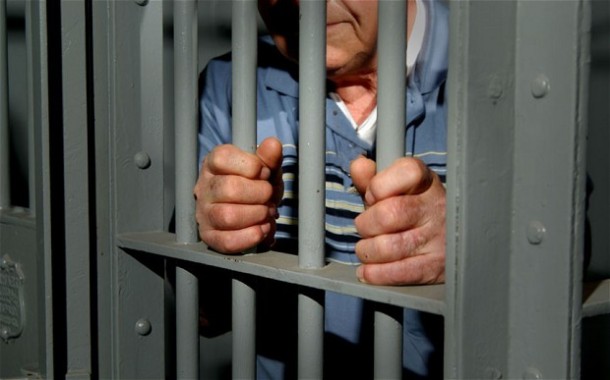“Sentence for murder is mandatory – it must be one of life imprisonment” remarked the judge in his sentencing; however, does life imprisonment really mean life imprisonment? The Sentencing Council themselves admit that ‘this is a complex area and there are many misunderstandings around it.’ This article seeks to set out the current legal position, especially in light of recent cases which have been instrumental in assisting to answer such a question.
In the case of murder, the sentence is a mandatory life sentence. This means that the judge has no option but to impose a life sentence. In this case though, life does not mean life even though it is labelled as a mandatory life sentence. The judge has the task of setting what is known as a minimum term. These can be found in Schedule 21 of the Criminal Justice Act 2003. The starting point may be 12 years, 15 years, 25 years or so forth, depending on the many factors which must be taken into account.
In some cases life really can mean life; these are known as ‘whole life orders’. The proposition for such being found in Section 4(1) of Schedule 21:
If—
(a) the court considers that the seriousness of the offence (or the combination of the offence and one or more offences associated with it) is exceptionally high, and
(b) the offender was aged 21 or over when he committed the offence,
the appropriate starting point is a whole life order.
This is then qualified with Section 4(2):
Cases that would normally fall within sub-paragraph (1)(a) include—
(a) the murder of two or more persons, where each murder involves any of the following—
(i) a substantial degree of premeditation or planning,
(ii) the abduction of the victim, or
(iii) sexual or sadistic conduct,
(b) the murder of a child if involving the abduction of the child or sexual or sadistic motivation,
(c) a murder done for the purpose of advancing a political, religious, racial or ideological cause, or
(d) a murder by an offender previously convicted of murder.
These provisions therefore allow for what is known as a whole life order. In this case life really does mean life. The minimum term to be set is effectively that of the whole life of the offender. This has, historically, always been the case; back in the 1960s when the death penalty was abolished, the “deal” was that life sentences would really mean life. On 30 June 2012 there were 45 offenders serving a whole life sentence. These include serial killers Peter Sutcliffe, Ian Brady, Dennis Nilson and Rosemary West.[1]
Then in July 2013, the European Court of Human Rights (ECtHR) got involved, unsettling what has clearly been established law. In the case of Vinter and Others v The United Kingdom,[2] the ECtHR ruled that whole life sentences without any prospect of release amount to inhuman and degrading treatment of prisoners; a breach of Article 3 of the European Convention on Human Rights.
Since this decision, judges have been less inclined and somewhat cautious in passing whole life orders. There has been confusion and the law has not been applied consistently. When sentencing Ian McLoughlin at the Old Bailey, Mr Justice Sweeney said the law prevented him from handing down a whole life term, instead passing a minimum term of 40 years. Contrast this with Mr Justice Wilkie, who made a whole life order in the case of Jamie Reynolds, convicted of a sexually-motivated abduction and murder. Mr Justice Wilkie being well aware of the Vinter ruling but deciding that he was bound by earlier rulings of the English courts that had upheld whole life orders.
Cue the Attorney General, Dominic Grieve, who referred Ian McLouglin’s sentence to the Court of Appeal. One of the roles of the Attorney General being to refer what he may consider unduly lenient sentences to the Court of Appeal for reconsideration. This case, Attorney General`s Reference 69 of 2013,[3] was heard and judgment was handed down on the 18 February 2014. The Court of Appeal ruled that the ECtHR had been wrong to state that whole life prisoners had no hope of release. They pointed to Section 30 of the Crime (Sentences) Act, which provides for the ‘possible exceptional release of whole life prisoners,’ saying it did provide that prospect.
“In our judgment the law of England and Wales therefore does provide to an offender ‘hope’ or the ‘possibility’ of release in exceptional circumstances which render the just punishment originally imposed no longer justifiable,” said Lord Thomas, Lord Chief Justice.
The effect of the Court of Appeal ruling is to restore the position before the ECtHR decision last July. Whole life sentences can now be given as before. One was given today to Michael Adebolajo, one of the Killers of Lee Rigby. Mr Justice Sweeney stating, “Michael Adebolajo I sentence you to life imprisonment with a whole life order. Michael Adebowale I sentence you to life imprisonment with a minimum term of 45 years”
It has therefore been shown that life does not always mean life. If a life sentence is given the Judge must go on to set a minimum term. This depends on the seriousness of the crime. The aggravating and mitigating factors must be considered. If a crime is exceptionally serious then a whole life order can be set as the minimum term. The answer to the question posed at the beginning of this article, does life really mean life, is therefore this: Life does not mean life, but it can do.
26 February 2014
Dale Timson
LLB (Honours) Student & Aspiring Barrister
[2] Vinter and Others v. the United Kingdom [GC] – 66069/09, 130/10 and 3896/10
[3] Attorney General’s reference number 69 of 2013, R v Mcloughlin (Ian) & Others [2014] EWCA Crim 188

